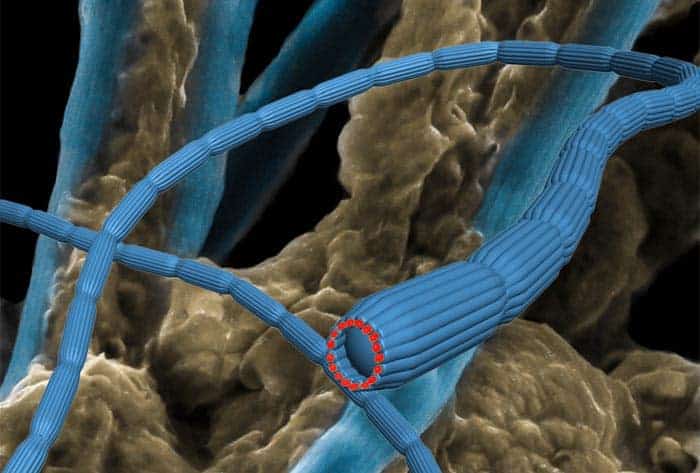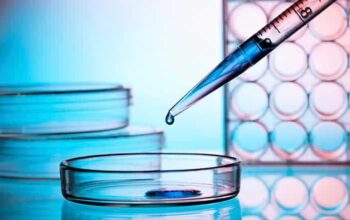In the realm of biological and electronic convergence, a fascinating phenomenon emerges—certain species of bacteria can conduct electrons over significant distances, effectively blurring the lines between living organisms and technological constructs. This remarkable trait raises an intriguing question: What if we could harness the inherent capabilities of these microorganisms to revolutionize energy transmission and storage? Envision a future where biological systems and electronic devices interplay seamlessly, with bacteria acting not merely as living entities but as conduits for electrical processes. However, this vision presents substantial challenges, necessitating a thorough exploration of the underlying mechanisms and implications of bacterial electron conduction.
Many types of bacteria have exhibited a pronounced ability to transfer electrons, a process that has far-reaching implications for bioelectronics and sustainable energy solutions. Certain species, particularly those in the Geobacter and Shewanella genera, are equipped with specialized proteins known as cytochromes. These proteins facilitate electron transfer across cellular membranes and contribute to the bacteria’s extraordinary metabolic versatility. As they engage in respiration, these microorganisms efficiently communicate with extracellular electron acceptors, allowing them to thrive in anoxic environments, such as marine sediments and biofilms.
Electron conduction in bacteria is mediated by various biochemical pathways that enable the transfer of electrons via conductive appendages known as pili. Specifically, conductive pili form a network that can transmit electrical current over centimeter distances, thereby enabling community-wide metabolic activities among bacterial cells. The implications of this mechanism extend into several fields, including environmental bioremediation, biosensing technologies, and even the burgeoning arena of biofuel cells, spurring considerable interest and research.
Examining the physiological and structural components involved in electron transfer reveals a complex orchestration of cellular infrastructure. The conductive pili, a type of nanowire formed by the aggregation of protein molecules, act as physical conduits for electron transport. Recent studies indicate that these structures, composed primarily of pili proteins known as PilA, possess unique conductive properties, allowing for efficient electron delocalization. The electronic properties of these proteins facilitate a process akin to the conduction found in metallic wires, bridging the gap between biological systems and traditional electronics.
The prospect of utilizing bacterial electron transport in real-world applications remains an enticing challenge. One potential avenue lies in the development of bio-electronic devices that leverage the bacteria’s natural capabilities. Imagine a biofuel cell powered by Geobacter species, generating electricity through the oxidation of organic substrates. Such cells could contribute to renewable energy sources, mitigating dependence on fossil fuels and enhancing overall energy sustainability.
Moreover, the employment of bacteria as biosensors presents an engaging frontier. By integrating these microorganisms into sensing platforms, researchers can design devices capable of detecting environmental pollutants or pathogens, capitalizing on the bacteria’s ability to respond to various stimuli through electron transfer. This opens new pathways for environmental monitoring and public health, exemplifying a burgeoning domain wherein biological and electronic realms intersect harmoniously for enhanced societal benefits.
However, as enticing as these opportunities are, they are accompanied by formidable challenges. Cultivating bacteria under controlled conditions to maximize electron conduction remains a significant hurdle. Furthermore, scaling laboratory successes to industrial applications introduces complexities related to the cost-effectiveness and stability of bioelectronics systems. Ensuring the longevity of bacterial populations in engineered environments, while maintaining their electron conduction capabilities, calls for innovative approaches and interdisciplinary collaboration spanning microbiology, materials science, and engineering.
Moreover, questions arise about the ecological impacts of utilizing bacteria in bioelectronic applications. The introduction of genetically modified microorganisms into ecosystems raises ethical considerations and the potential for unforeseen consequences. Addressing these concerns is imperative, demanding rigorous evaluation and adherence to biosecurity protocols throughout the research and development processes.
The potential of bacteria to serve as biocompatible conductive materials represents a paradigm shift in materials science and bioengineering. A pivotal question looms: how can researchers manipulate and enhance the electron-transfer mechanisms in these organisms to optimize their functionality for specific applications? By understanding the intricate biochemical pathways and elucidating the structural biology of proteins integral to electron transport, scientists can devise strategies for improved bacterial strains or synthetic biological systems tailored for customized roles in bioelectronic devices.
As we delve deeper into the electrifying world of bacterial electron conduction, we begin to uncover the vast possibilities it presents. The synthesis of biological and electrical systems ushers in an era ripe with innovative solutions for energy production, environmental monitoring, and biocompatible electronics. However, the confluence of biology and technology also necessitates a prudent approach. Balancing efficiency and ecological integrity remains paramount—ensuring that while we explore the potentials, we respect the delicate fabrics of our ecosystems and the ethical boundaries of scientific inquiry.
Wired for life, bacteria are not merely passive components of their environments; they are active participants in the intricate web of energy dynamics. By embracing their unique capabilities, we stand on the brink of revolutionary advancements that could redefine how humanity interacts with technology and the natural world. The challenges are plentiful, yet within them lies the essence of exploration and discovery—paving pathways toward a future where life and technology coalesce in harmonious synergy.










